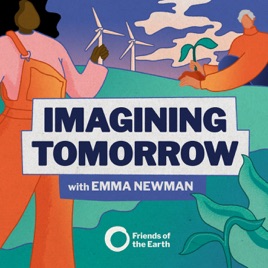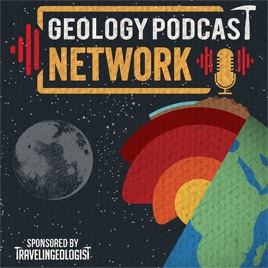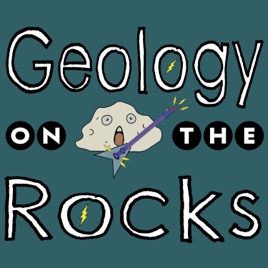
Advertise on podcast: Quirks and Quarks
Rating
4.7 from
Country
This podcast has
26 episodes
Language
Publisher
Explicit
No
Date created
2006/04/24
Average duration
55 min.
Release period
7 days
Description
CBC Radio's Quirks and Quarks covers the quirks of the expanding universe to the quarks within a single atom... and everything in between.
Social media
Check Quirks and Quarks social media presence
Podcast episodes
Check latest episodes from Quirks and Quarks podcast
Icelanders reap the costs and benefits of living on a volcanic island and more…
2024/02/23
We now know what happened to a supernova discovered by a Canadian 37 years ago (0:58)
A mystery about the ultimate fate of an exploding star has been solved. Canadian astronomer Ian Shelton discovered the new bright light in the sky back in February 1987, and recognized it as the first supernova to be visible to the naked eye in 400 years. In a new study in the journal Science, astrophysicist Claes Fransson from Stockholm University, confirmed that the remaining cinder collapsed into a super-dense neutron star.
A vibrating pill makes pigs feel full (10:30)
There’s a lot of interest in weight loss drugs right now, but a new technology could one day be able to help control appetite without pharmaceuticals. Researchers at MIT have developed a mechanical pill that, when ingested, vibrates in the gut, stimulating the nerves that signal fullness much like drinking a full glass of water before a meal. The research was led by Shriya Srinivasan, a former MIT graduate student who is now an assistant professor of bioengineering at Harvard University. She says that while it hasn’t been tested in humans, pigs ate 40% less food after ingesting the pill. The research was published in the journal Science Advances.
Wildebeest push Zebras out in front in the annual Serengeti migration (18:22)
Nearly two million animals — zebras, wildebeest and gazelles — migrate through Africa’s Serengeti plain every year. It was thought the Zebras led the migration. But a new large-scale study has shown that the reason the Zebras go first is that they’re being pushed ahead by the more numerous Wildebeest who eat everything in sight. Michael Anderson from Wake Forest University in North Carolina shares the new findings in this migration pattern.
Temperature and pollution are conspiring to mess up sea turtle sex ratios (26:55)
Biologists have known that higher temperatures cause endangered green sea turtle hatchlings to develop as females more often. Now a team has discovered that pollution can exacerbate this, causing sex ratios to skew even more. Arthur Barraza of the Australian Rivers Institute in the School of Environment and Science at Griffith University in Australia said this could add to the turtles’ difficulties if too few males are available for reproduction. The research was published in Frontiers in Marine Science.
How Icelanders suffer and benefit from their volcanically active home (36:14)
Scientists studying the recent volcanic activity near the town of Grindavik now have a much better understanding of what’s behind the recurring eruptions. Freysteinn Sigmundsson, a geophysicist at the University of Iceland, said they’ve seen pressure building up and moving underground repeatedly before erupting at the surface. Their study was published in the journal Science.
Over in the northeast region of the country, in Kafla, scientists and engineers are busy preparing to tunnel into a relatively shallow magma chamber. Hjalti Páll Ingólfsson, the director of GEORG, described their plan to dig into the magma chamber that was discovered by accident for scientific research. However they are also interested in whether it can be exploited as a potential energy source ten times more powerful than current geothermal energy sources.
more
A post valentine’s look at humpback mating songs and a marsupial that’s sleepless for sex
2024/02/16
Atlantic ocean circulation edging closer to potentially catastrophic climate tipping point
The stability of much of the world’s climate depends on ocean currents in the Atlantic that bring warm water from the tropics north and send cool water south. New research in the journal Science Advances confirms what scientists have long feared: that we are on course to this tipping point that could cut off this important circulation pattern, with severe consequences. René van Westen from Utrecht University, said if we reach this critical threshold, it could plunge Europe into a deep freeze, disrupt rains in India, South America and Africa, and lead to even more sea level rise along the eastern North American coast — all within 100 years.
Humpback whales look for quiet corners to broadcast their breeding songs
Scientists wanted to know why the thousands of humpback whales in Hawaii for breeding season move closer to shore to sing their choruses at night. Anke Kuegler, a marine biologist at Syracuse University, tracked whales to get a better understanding of their daily movement patterns. She found that during the day, they take their songs offshore, likely to ensure potential mates or other male competitors can hear their songs in the crowded underwater environment. Their research was published in the journal Royal Society Open Science.
A tiny marsupial sacrifices everything — including sleep and life itself — for love
The Antechinus, a small mouse-like marsupial that is native to Australia, has a short, frenzied, three week-long annual breeding season, after which the males drop dead. A new study, led by Erika Zaid at La Trobe University, shows the males will sacrifice a significant amount of sleep to ensure they don’t miss out on their one shot at reproductive success. The researchers don't believe the sleep loss leads to their demise—in fact, they show very little signs of exhaustion despite losing out on so many zzz’s.
How to encourage climate action without bumming people out
In a global study involving almost 60,000 participants in 63 countries, behavioural psychologists compared 11 different ways of talking about climate change to see which one encouraged the most action. Madalina Vlasceanu and her team at New York University found that, unsurprisingly, the results varied widely depending on demographics. Some of the more successful interventions tested include writing a letter to future generations, showing examples of past effective collective action, and emphasizing scientific consensus on the causes of climate change.
Saturn’s ‘death star’ moon could have the water of life
Liquid water has been found in what astronomers say is the solar system’s most unlikely place
Saturn’s moon Mimas is a small body with an irregular orbit, best known for its resemblance to the Death Star in the Star Wars movies. A new study in the journal Nature, led by astronomer Valery Lainey, suggests it has a liquid layer of water beneath its frozen surface, which may mean life-sustaining water is far more common in the solar system than we thought.
Moths aren’t drawn to the flame - they’re just really confused by them
A new study suggests that insects flit around artificial light at night because they are confused, not because of a fatal attraction. Sam Fabian and Yash Sondhi used motion capture and high speed imagery to understand insects’ flight patterns, and found that they always turned their backs to the light, which leaves them trapped in a spiral around the source. This suggests the insects are mistaking the lights for the sky, which normally helps tell them which way is up.
more
Scientists explore which came first, the chicken or the egg, and more…
2024/02/09
Blue whales are genetically healthy but are breeding with fin whales, study suggests (1:03) Researchers have sequenced the genome of a blue whale that washed up in Newfoundland in 2014, and used it to do a comparative study of North Atlantic blue whales. A team led by Mark Engstrom, curator emeritus at the Royal Ontario Museum found that despite their small population, the whales are genetically diverse and connected across the north Atlantic, but that on average blue whales from this group are, genetically, about 3.5 per cent fin whale. The work was published in the journal Conservation Genetics. Sea otters’ ravenous appetite for crabs is reshaping a California coastal marshland (10:10) The return of sea otters to salt-marshes on the California coast has halted the erosion of the marshes that occurred in their absence. Without otters, crabs quickly overpopulated and made the area look like “Swiss cheese” by burrowing into the marsh sediments and eating the vegetation’s root system. Brent Hughes from Sonoma State University said their study demonstrates the importance of predators in maintaining the integrity of these vulnerable salt-marshes to boost climate change resiliency along the coast. What will become of our solar system as our sun evolves into a white dwarf star? (19:03) Over many billions of years our sun, and stars of similar size, will first swell into a red giant star, and then contract into a small, dense white dwarf star. A new study using the James Webb Space Telescope has surveyed nearby white dwarf star systems to understand the fate of their planets, and astronomer Susan Mullally says this can help predict our planet’s fate as well. Permafrost has shaped Arctic rivers — and as it melts much will change (27:23) A satellite survey of the frozen north has demonstrated how much permafrost has shaped the landscape, by limiting the number of rivers that can carve into the frozen land. Geoscientist Joanmarie Del Vecchio warns that as permafrost melts, the waters will find many more paths, and this could unleash carbon equal to the annual emissions of 35 million cars for every degree of warming. The research was published in the journal PNAS. Understanding the evolution of what came first, the chicken or the egg (35:44) While the marine ancestors of all terrestrial vertebrates laid eggs in the water, scientists long thought that the first terrestrial animals must have been laying eggs to conquer life on land. In an attempt to untangle this mystery, scientists compared extinct and living animals to trace how far back in their evolution the first egg-layers appeared. Michael Benton, from the University of Bristol, said their study didn’t discern if the first land animals were laying soft-shelled eggs or giving birth to live young, but hard-shelled eggs like modern bird eggs came much later. In the Australian Alps, egg-laying lizards from the valleys breed with live-birth bearing lizards from higher up in the mountain to create hybrids with traits across the whole spectrum in between. Katherine Elmer, from the University of Glasgow, described her study of this population that allowed them to identify the genetic differences between laying eggs and giving birth to live young.
more
An ancient tree’s crowning glory and more…
2024/02/02
Shark declines: finning regulations might have bitten off more than they can chew
In recent years governments around the world have attempted to slow the catastrophic decline in shark numbers with regulations, including on the practice of shark finning. But a new study led by marine biologist Boris Worm and published in the journal Science suggests that these regulations have backfired and shark mortality is still rising. The reason is that shark fishers responded by keeping all of the shark, and developing ever more markets for shark meat and oils, such as in supplements, cosmetics, and even hidden as “whitefish” or “flake” in fish and chip markets.
Dogs like TV about dogs but don’t give a rat’s about squirrels
Like a lot of us, dogs spend a certain amount of time in front of the TV. But what are they watching and what do they like? Freya Mowat, a veterinary ophthalmologist from the University of Wisconsin-Madison, was interested in finding what dogs like to watch on TV so that she could develop new ways to test dog vision. Her study, recently published in the journal Applied Animal Behaviour Science, revealed that, unsurprisingly, dogs preferred to watch other dogs, and ten per cent also enjoyed watching cartoons as much as live action animals. The more unexpected finding was that the dogs were not as interested in watching humans, squirrels, or trucks.
An ancient tree’s crowning glory
Paleontologists working in Norton, New Brunswick have made an extraordinary discovery: a fully intact 350 million year old fossilized tree unlike any previously known to science. Matt Stinson, the assistant curator of geology and paleontology at the New Brunswick Museum, says it’s extremely rare in the fossil record to find a fully intact tree like this one that has its trunk, branches and leaves still attached. Olivia King, a research associate at the museum, described it as “odd and whimsical,” like the trees from Dr. Seuss’s famous book The Lorax. Their study is in the journal Current Biology.
There was an old elephant who swallowed an ant…
The complex interdependence of plants and animals in an ecosystem are often hard to fathom until they go wrong. This is illustrated by a new study in Kenya showing how an invasive ant led to elephants knocking down trees, affecting how lions hunt zebras, which turned out to be bad news for buffalo. Adam Ford from the University of British Columbia, Okanagan is part of the team on this study published in Science.
Understanding when (earlier), and how (cleverly), stone-age people lived in Europe
New technology to study fragments of bone found in a cave in Germany is leading to a rewriting of the history of how Homo sapiens established themselves in Europe, when the continent was dominated by Neanderthals. A team, led by Jean-Jacques Hublin, at the Max Planck Institute for Evolutionary Anthropology, uncovered human bones dating back 46,000 years in a cave in Northern Germany, which means the Homo sapiens were living side by side much earlier with Neanderthals in a frigid ice-age climate instead of sticking to the tropics like previously believed. The research, including detailed climatic reconstructions, led to three papers published in the journal Nature.
A separate find is giving new insight into their material culture as archaeologists have uncovered a subtly clever tool they think ancient humans would have used to spin rope. The team built replicas of the tool and found it worked remarkably effectively to twist plant fibres into strong rope. Nicholas Conard, an archaeologist from the University of Tübingen in Germany, was part of the team, and the work was published in Science Advances.
more
The aftermath of a record-smashing volcano: Hunga Tonga–Hunga Haʻapai two years later, and more...
2024/01/26
Oil sands produce more air pollution than industry’s required to report, study says (0:54)
The volume of airborne organic carbon pollutants — some of the same pollutants that lead to smog in cities — produced by Alberta’s oil sands have been measured at levels up to 6,300 per cent higher than we thought. John Luggio, a research scientist with Environment and Climate Change Canada, said their cutting edge techniques in their new study picked up many pollutants industry hasn’t been required to track. Mark Cameron from Pathways Alliance, the industry group representing several oil sands companies, agreed that these findings warrant further review.
Megalodon was enormous — but perhaps less husky than we’d thought (9:20)
The extinct shark megalodon was likely the largest predatory shark to ever swim the oceans, but a new reconstruction suggests it was not quite the behemoth we thought it was. Scientists had assumed it was beefy and thick like a modern great white shark, but a new study says the evidence suggests it was a slim, sleek killer.Philip Sternes, a PhD candidate at the University of California, Riverside in the department of evolution, ecology and organismal biology, worked with a team of 26 international scientists on the study featured in Palaeontologia Electronica.
Astronomers find a planet with a massive, gassy tail (17:46)
Observations of a large, Jupiter-sized exoplanet closely orbiting a nearby star have revealed that the planet has a huge, comet-like tail. The 560,000 kilometer-long tail seems to be a result of the powerful stellar wind from the star stripping the atmosphere away from the gaseous planet, and blowing it out into space. The find was made by a team at University of California Los Angeles, including astrophysicist Dakotah Tyler, and was published in The Astrophysical Journal.
Put down your laptop, pick up your pen — writing stimulates brain connectivity (26:22)
A new study looking at the activation of networks in the brain associated with learning and memory suggests that writing by hand produces much more brain connectivity than typing on a keyboard. This adds to the evidence that writing by hand is an aid to memory. Audrey van der Meer, a professor of neuropsychology and director of the Developmental Neuroscience Laboratory at the Norwegian University of Science and Technology, led the work, which was published in Frontiers in Psychology.
The aftermath of a record-smashing volcano: Hunga Tonga–Hunga Haʻapai two years later (34:09)
The aftermath of the record-smashing Tonga volcano that’ll rewrite textbooks
Record-smashing Tonga volcano sheds new light on how underwater volcanoes blow
In January 2022, the largest underwater volcanic eruption ever recorded devastated the seafloor of the southwestern Pacific. A tsunami washed ashore in nearby Tonga — causing significant property damage, but thankfully taking few lives. Kevin Mackay, a marine geologist from the National Institute of Water and Atmospheric Research in New Zealand, said this blast broke many records, including the loudest sound, highest eruption and fastest underwater avalanches ever recorded. And we’re still feeling the heating effects from it today from the water vapour it shot into the stratosphere.
more
Can diet and exercise be replaced by pills and more…
2024/01/19
A controversial fishing method may release CO2 from the sea floor
Bottom trawling is a widely-used fishing method that involves dragging weighted nets that scrape along the seafloor. It’s sometimes been criticized for damaging marine ecosystems. Now a new study in Frontiers in Marine Science suggests that it also can release significant amounts of carbon trapped in seafloor sediments into the atmosphere. Trisha Atwood, an associate professor at Utah State University and a marine researcher with National Geographic’s Pristine Sea Program worked with scientists at NASA and The Global Fishing Watch for this study.
Travel tales a mammoth tusk can tell
Researchers have been analyzing the tusk of a woolly mammoth that died in Alaska 14,000 years ago. Using modern chemical analysis, they’ve been able to track the pachyderm’s travels through its life, and the trail it took to its final demise, likely at the hands of human hunters. Dr. Matthew Wooller at the University of Alaska Fairbanks worked with the Healy Lake Village Council, the University of Ottawa and Hendrik Poinar’s laboratory at McMaster University on this study published in Science Advances.
Common sense is not that common, but is quite widely distributed
Sociologists at the University of Pennsylvania have helped answer the age-old question, do most of us have common sense? Researchers including Mark Whiting explored this by asking 2000 people if they agreed with thousands of terms that had been deemed as “common sense.” In a paper published in PNAs, the team found that the larger the group, the less likely there was commonly shared knowledge, and no one age, educational or political group stood out as having more common sense than others.
Male birds who practice their songs do better with females
A new study suggests that male songbirds who attract mates with their songs need to practice their tunes or their attractiveness suffers. The researchers found a way to harmlessly discourage the birds from singing, and found that without practice females snubbed their efforts.
Iris Adam, a biologist at Southern Denmark University, was part of the team, whose research was published in Nature Communications.
Better living through pharmacology — Can drugs duplicate a healthy lifestyle?
The key to good health used to be simple: eat less and exercise. But popular new weight loss drugs could soon be joined on the shelf with a new class of pharmaceuticals that duplicate the effects of a trip to the gym. We explore just how these new pharmaceuticals work and just how much they can replace a healthy lifestyle.
First developed to treat type 2 diabetes, now widely popular as weight loss drugs, GLP-1 agonist drugs like Ozempic may in fact have benefits beyond helping with obesity and cardiovascular disease. Dr. Daniel Drucker, a senior research scientist at Lunenfeld-Tanenbaum Research Institute and the University of Toronto, early evidence suggests they may also work to treat kidney disease, addiction related disorders, metabolic liver disease, peripheral vascular disease, Parkinson's and Alzheimer's.
To counter our modern sedentary lifestyles, scientists are also looking for the equivalent of an exercise pill. Ronald Evans, a professor at the Salk Institute, has been working on drugs that control genetic “master switches” that can turn on the same network of genes — and confer many of the same benefits — as a brisk walk or a jog would do.
more
Could buried hydrogen help save the world, and more…
2024/01/12
*** How history’s largest ape met its end ***
For nearly two million years, a gigantic ape, three meters tall and weighing a quarter of a tonne, lived in what is now southern China, before mysteriously disappearing. Exactly why the Gigantopithecus Blacki went extinct has been a huge mystery for paleontologists, especially because other apes were able to thrive at the time. Now a massive study, co-led by geochronologist Kira Westaway of Macquarie University, reveals their size was a disadvantage, and left them unable to adapt to a changing climate. The research was published in the journal Nature.
*** People with PTSD process their trauma as if it’s happening in the present ***
Post traumatic stress disorder (PTSD) is characterized by intrusive thoughts that cause people to relive their trauma. In a new study in the journal Nature Neuroscience, scientists have figured out that this is reflected in brain activity. Daniela Schiller, a professor of neuroscience and psychiatry at the Icahn School of Medicine at Mount Sinai in New York, said their brains respond differently with traumatic memories than with ordinary memories, causing the traumatic memories to feel as if they are happening in the present, rather than the past.
*** Paleontologists identify animal skin 4½ times older than the last dinosaurs ***
A fossilised skin sample discovered in an Oklahoma cave is the oldest skin sample ever identified. It belonged to a reptile species that lived nearly 300 million years ago. Ethan Mooney, a paleontology masters student at the University of Toronto, said this skin fossil gives insight into how the first vertebrate animals adapted to a more protective with the critical transition from ocean to land. Their research was published in the journal Current Biology.
*** How an octopus told us the West Antarctic ice sheet collapsed ***
Scientists are trying to learn when the West Antarctic Ice Sheet last collapsed, in order to learn when it might happen again. In a new study, published in the journal Science, Sally Lau at James Cook University analyzed the DNA of Turquet’s octopuses, which have been scuttling around the Antarctic sea floor for millions of years. These octopuses are today separated by massive ice sheets, but by looking at when different populations were able to breed throughout history, they could see when the ice wasn’t there.
*** Geologic Hydrogen could be clean, green and plentiful ***
More than a century ago we discovered that there were rich deposits of energy buried deep in Earth, and so oil and gas became the foundation of our industrial civilization. Now history might be repeating itself as scientists think there could be massive amounts of clean, green hydrogen hiding underground as well. Quirks producer Jim Lebans spoke with Geochemist Barbara Sherwood Lollar from the University of Toronto, and geologist Geoffrey Ellis from the United States Geological Survey to understand where this hydrogen has come from, how much there is, and what its potential could be as an energy resource.
more
A Cave of bones could rewrite the history of human evolution, and more…
2024/01/05
Hurricanes carry microplastic pollution in the oceans back to land
Humans communicate in several ways with birds who lead them to honey
Bird brains have evolved to tolerate a high-speed impact into water
How to make people more easy to hypnotize
Unearthing a small-brained hominid species that challenges human exceptionalism
more
Our annual holiday question show
2023/12/29
Questions ranging from moths to mustard, moonlight to migraines
Seasonal science with reindeer, special stars and miracle babies…
2023/12/22
Reindeer and arctic seals have complex nasal passages to keep them warm; Reindeer can eat and sleep at the same time; This penguin species sleeps by taking about 14,000 micronaps each day; ‘Naked’ stars are stripped by their partners before they explode; Miracle babies in bags: How close are we to an artificial womb?; Why don’t any deer's legs freeze?
more
The Quirks & Quarks holiday book show!
2023/12/15
How studying long-lived animals might give us the key to longer, healthier life; Looking deep inside planets, under our feet and out there in space; Honouring the overlooked legacies of women in science.
more
A young carnivorous dinosaur’s last meal and more
2023/12/08
A young carnivorous dinosaur’s last meal; A robot steps forward to build the wall; Canada geese families pull closer together in tough times; The great wall of China has a ‘living skin’; You say you want a Microbial revolution?; Why doesn't the temperature in the far North go up and up and up when the Sun never sets?
more
Podcast reviews
Read Quirks and Quarks podcast reviews
YGlen
2023/12/09
The GOLD STANDARD for Science Communicators
No one does it better than Bob McDonald!
GB Wyo
2023/01/29
Q&Q
My phone kept sending a rating before I got to the 5th star! Q&Q is definitely 5 STAR. All interviewers should be required to study Bob Mc.
Doctor Rene DO
2022/07/03
Really interesting
Just discovered this program. It holds my attention with a wide variety of subjects. Is a welcome relief from the less pleasant aspects of life. I’...
more
7asafdrgfd
2020/11/22
I’m 7 years old and I love it
I like to listen too it wen I go to sleep
bm289458696
2019/12/30
Best Science Podcast Ever
This podcast is outstanding. Bob is the best interviewer out there and you can trust him to ask the best questions. Intelligent, trustworthy, and they...
more
littlest cowboy
2020/09/12
Dull
Black Birders beware
stuman914
2019/02/09
Well done!
Interesting and well done every episode!
Hibiscus
2018/03/12
fascinating stuff
I listen to Q&Q more than any other of the 8 or 10 podcasts I subscribe to.
Mwpps
2018/02/07
love this show, except....
This is a terrific science podcast! However, I have difficulty listening to the whole episode because of the way the microphones are set up: there a...
more
HeyCanada
2018/01/17
Great podcasts but
Please don’t talk about the President. Thursday’s episode was a let down. You have done a great job of making a very informative podcast without menti...
more
Podcast sponsorship advertising
Start advertising on Quirks and Quarks & sponsor relevant audience podcasts
You may also like these earth sciences Podcasts

4.6
45
189
Third Pod from the Sun
American Geophysical Union

3.7
41
29
Imagining Tomorrow
Emma Newman with Friends of the Earth

4.9
44
84
Geology Podcast Network
Unknown

5
2
22
SolarPunk Permaculture
Sam Betteridge

4.7
180
115
Crazy Town
Post Carbon Institute: Sustainability, Climate, Collapse, and Dark Humor

5
4
32
PFAS Pulse Podcast
HRP Associates Inc.

4.8
79
194
The Wandering Naturalist
Three Rivers Park District

4.8
18
48
Geology On The Rocks
James Hobbs

0
0
9
Calix Podcast INNOVATING FOR THE EARTH
Calix Limited

0
0
77
Geographical Thinking from Esri Canada
Esri Canada



